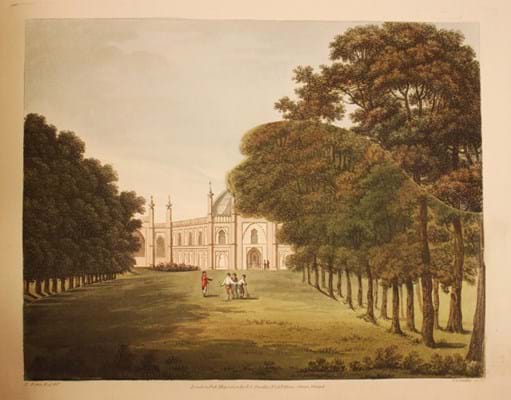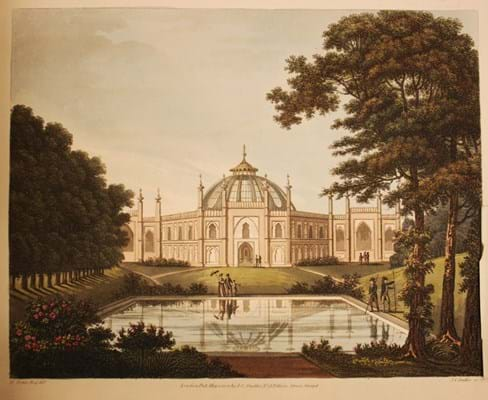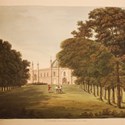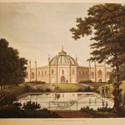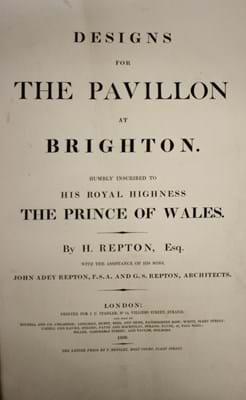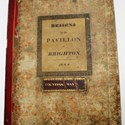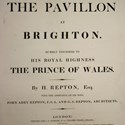This year has marked the bicentenary of his death and as well as a series of events held to celebrate his genius, 2018 ends with an intriguing item offered in the Book Sale on December 19 at Tennants’ auction house in Leyburn, North Yorkshire, demonstrating his entrepreneurial spirit.
Repton (1752-1818), who is viewed as the successor to the great garden designer ‘Capability’ Brown, had the brainwave of producing before and after scenes for potential clients to show how his designs would appear.
In these pre-Instagram and smartphone days, Repton’s solution was to illustrate the current view in watercolour involving a flap, which could be lifted to reveal the proposed design – an easy way to show a client the comparisons of their houses.
His Red Books (so named by Repton due to the distinctive red leather bindings he favoured) were the most famous examples of this but the lot coming up at Tennants, estimated at £1500-2000, is another fascinating case. It is a copy of Repton’s Designs for the Pavilion at Brighton. He was commissioned by the future George IV but the prince ran out of money and the scheme was partially realised by John Nash in 1814.
Paint it red
In a 30-year career Repton designed more than 400 English landscapes and gardens, many of which survive today and most of which were accompanied by one of those famous Red Books.
Repton Revived, an exhibition of Red Books, designs and watercolours by him, is one of the bicentenary events and runs until February 3 at the Garden Museum in London. Twenty-four Red Books are on display. Very few remain, and this exhibition reunites the largest number of Red Books in one place in 25 years.
Repton was happy to market himself as the ‘heir’ to Brown and would give out business cards advertising his services as a ‘landscape gardener’ (the first to ‘brand’ himself as such). His style differed from Capability Brown by including more ornamental elements, trying to achieve a clearer separation between the agricultural landscape and the house by an ornamental zone in between.
According to the Garden Museum: “As pages are turned, trees rise or are felled, a stream becomes a lake, an untidy farm becomes a genteel park, or, as is the case in the Sundridge Park Red Book, a house is suddenly replaced with another, grander manor.
"Repton interspersed the watercolours with notes, often in a conversational style, recalling walks with the owner of the house during his visit. Compliments are followed by criticism, very often of the designer who had preceded Repton."
Woburn Abbey in Bedfordshire is one of the best surviving examples of his work.
Blooming auction results
When Red Books have come up at auction the resulting prices have been impressive. The Red Book for Sunning Hill, Berkshire, ‘the Seat of Ia [James] Sibbald Esq’, 1790, doubled the top estimate at Christie’s in new York in May 2012 in selling for a premium-inclusive $104,500 (then about £67,900).
In the same sale, the Red Book for 'Moregenhanger in Bedfordshire a Seat of Godfrey Thornton Esq’, 1792, took $116,500 (around £75,600).
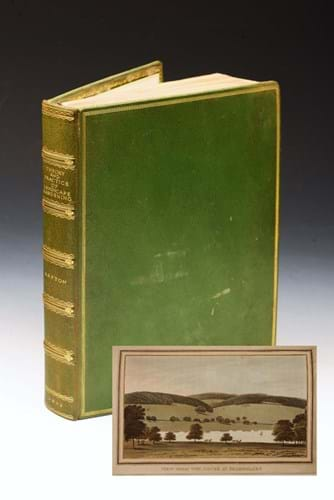
Humphry Repton's Theory and Practice of Landscape Gardening which sold for £3100 at Mallams' auction in September 2017.
As with this Tennants lot, cheaper ways to collect Repton are available, however. Another recent example was his Observations on The Theory and Practice of Landscape Gardening, 1803, offered at Oxford saleroom Mallams in September 2017. Estimated at £500-800, it sold for a hammer price of £3100.


